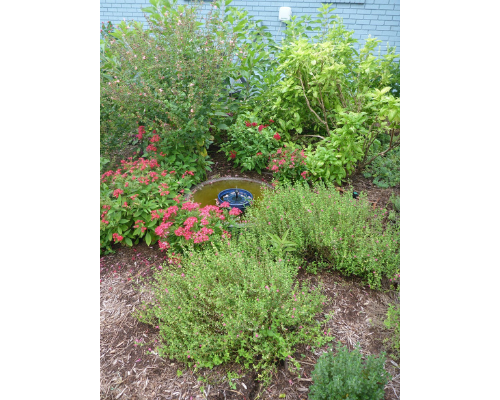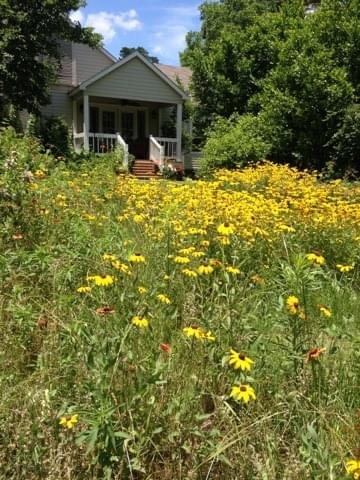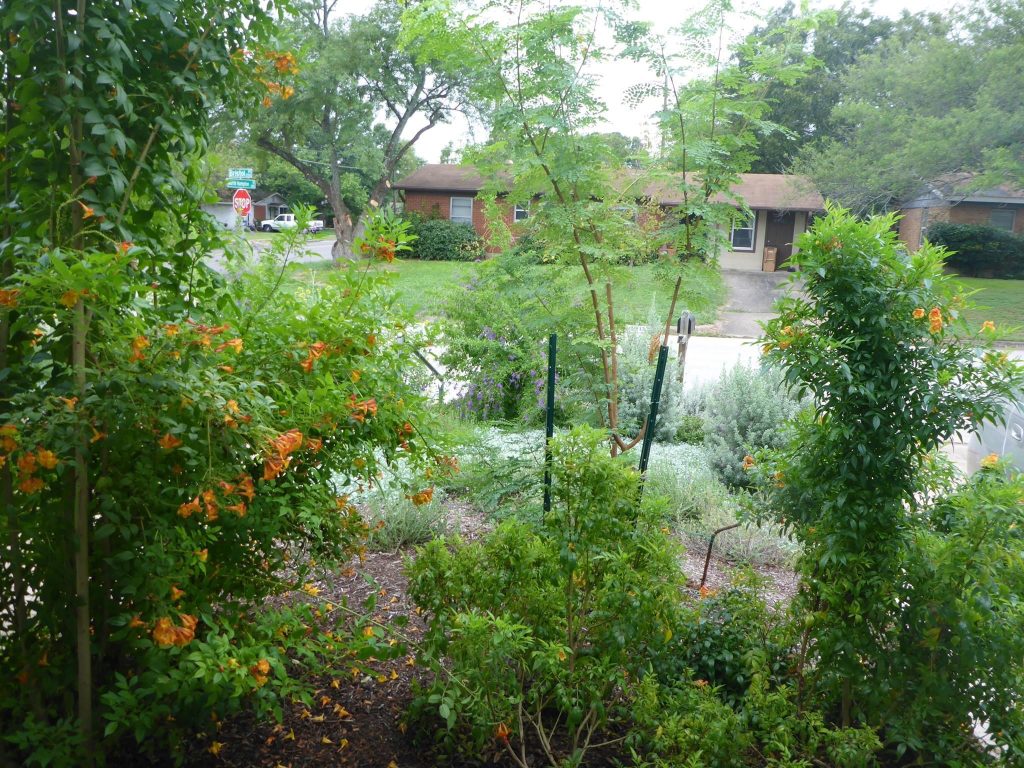Last Christmas, my extended family sat by the pool and tried to play board games. It was a cool 72 degrees, but in the sun, it felt more like 90. Looking at the ground, you could see acorns carpeting their entire back yard. My cousins have this huge post oak which shades the house. Everyone seemed confused by the sheer amount of acorns on the ground, on the chairs and in the pool. I had taken a few botany classes so I interjected, “During hotter climate periods, oaks produce more acorns during the fall and winter seasons. This usually happens every couple of years, but now it’s becoming more frequent due to global warming.”
Then everyone groaned and told me to stop ruining Christmas.
We have it ingrained from pop-culture, the media and politicians: “Don’t be a Debbie Downer.” But the situation our planet is in, that our community is in, is less of an SNL skit and more of a disaster movie where frantic scientists are trying to convince the politicians to do something while they hide in their bunker.

There is no denying the effects of climate change. Streams that never used to flood are flooding, the land is shifting underneath us, and in many ways, the south’s subtropical climate is becoming tropical. No. Really. Tell that to all tropical diseases and wildlife that keep coming here from the tropics.
The floods in southeast Texas and Louisiana have always existed, but now they’re becoming worse. We forget. East Texas has already been host to migrants escaping climate change.
Our region has always had strong cultural ties to Louisiana. After Hurricane Katrina, thousands of people moved to East Texas. It wasn’t just one storm, though, it was a buildup. Since the 90s onward, we have recorded the most powerful hurricanes on record. The mayors of the regions are crying for help, and have stated that hurricane season has changed for the worse.
When I originally wrote this piece, we hadn’t felt the destruction caused by Hurricane Laura. It wasn’t the first, and it won’t be last. We need to be proactive instead of keeling over and giving up.
These last 10 years have been some of the hottest on record. The carbon signatures released by human emissions have a different form than natural carbon dioxide. More so, the amount of carbon dioxide in Earth’s atmosphere has surpassed levels seen in the entirety of human history.
But: What if the glass is half full? In the history of our Earth, photosynthetic bacteria caused a mass extinction known as the Oxygen Catastrophe, adding oxygen into the atmosphere that changed the climate by taking out carbon dioxide from the atmosphere, causing the first Ice Age. Most life on Earth was driven to extinction, but it’s because of this event that we’re alive today. An ozone layer was created, and eukaryotes became prominent as they had better metabolisms to use oxygen, creating the blueprint for life in our world.
Life happens amid struggle, as Frederick Douglass notes, “If there is no struggle, there is no progress. This struggle may be a moral one; or it may be a physical one; or it may be both moral and physical; but it must be a struggle.”

I don’t view climate change with pessimism, I see our glass half full. In East Texas, we are truly blessed. We have a large potential for solar energy, as well as a fair amount of wind and geothermal energy. East Texas even sits on one of the largest deposits of natural gas in the world, which could be a huge factor in producing hydrogen fuel. Industries that don’t even exist could tap into this resource right here in the piney woods.
Believing in global warming should be a non-starter. Adapting our economy and lifestyle for an environmental shift that is inevitable is not a political position; it is a reality. Businesses and organizations are already going through this process. Exxon wishes to address global warming and has begun to heavily invest in alternative fuels.
What individual action can we take? Let’s talk about your lawn. It doesn’t have to go, but we can do so much better. Native plant gardens in our outdoor spaces can save you money on water, require less maintenance, reduce pests, increase crop yields and can save species from extinction.
I created Ark Habitat Restoration with the specific goal of cultivating and harvesting seeds native to East Texas, so we can restore habitat for future generations. This has to be a community activity. These methods are most effective when there is more land in use for native plants. If every person gave a portion of their outdoor space, we could create a highway for native pollinators and birds throughout our region.
Our organization will work with experts to scope out your outdoor area, work with you to find what plants will work best, and do minor landscaping work for free. Our only stipulation is letting us return next fall to gather seeds for next year. These patchwork gardens of native plants will help act as a seed bank, saving these rare plants for generations to come.

Here’s how you can get involved.
Right now, what we need the most is the space to grow native plants. If you own any property, let us work with you. There are tons of wildlife-based tax exemptions and land evaluations that benefit from the inclusion of native plants and providing habitat for wildlife. Not only will our volunteers provide you with the labor to help manage your land, our experts can help you lay out a plan to improve your land. Don’t own land? You can do your part, even if all you have is a balcony apartment. If you want to have native plants, less pests and more birds, contact us at [email protected]
From a four by four patch of lawn to a forty acre property, let’s work together to create some beautiful landscapes. Our initial goal is to help Tyler become part of Bird City Texas. In time, it’s a goal I believe our community is capable or reaching.
If you’d like to volunteer in any capacity, or would like to join our community, check out our Facebook page for more contact information, or alternatively, join our community action group.
Our website is currently under construction. Keep a lookout for any events, newsletters and environmental resources.
The forests around my home have been disappearing due to fire, construction and the building of new power lines. So much of it has disappeared in my lifetime and I’m only twenty-four years old. But for every calamity, there is a rebirth.
Plants I’ve never seen before have started to sprout up. Native plants have started to retake the space these trees have left behind. One day, my grandkids will get to see the saplings I planted turn into majestic oaks and pines. My vision of the future is one of hope, where we weather the storm and come back stronger. I don’t believe we’ve forgotten how to do that.
Govinda Dass is a University of Texas at Austin graduate and Tyler ISD educator. You can read about the house “in the woods” of northwest Tyler where he was born, raised, and still lives in the April 2019 Out of the Loop storytelling transcript: “Holding on to Tyler’s Green Spaces.” Govinda can give you a list of the best folk punk bands to watch live and the secret to cooking the perfect butter chicken, but the most important gift he hopes to share with his city is the abundance of its natural habitat restored for generations to come. This summer, he has worked to launch a new community-driven organization called Ark Habitat Restoration that will mobilize Tyler residents to plant and harvest native seeds.
Thanks for reading this story. Just one more thing. If you believe in the power of local journalism here in Tyler, I'm hoping that you'll help us take The Loop to the next level.
Our readers have told us what they want to better understand about this place we all call home, from Tyler's north-south divide to our city's changing demographics. Power, leadership, and who gets a seat at the table. How Tyler is growing and changing, and how we can all help it improve. Local arts, culture, entertainment, and food.
We can't do this alone. If you believe in a more informed, more connected, more engaged Tyler, help us tell the stories that need to be told in our community. Get free access to select Loop events, behind-the-scenes updates about the impact and goals of our work, and, above all, a chance to play a part in bringing more fresh, in-depth, unexpected journalism to Tyler.








